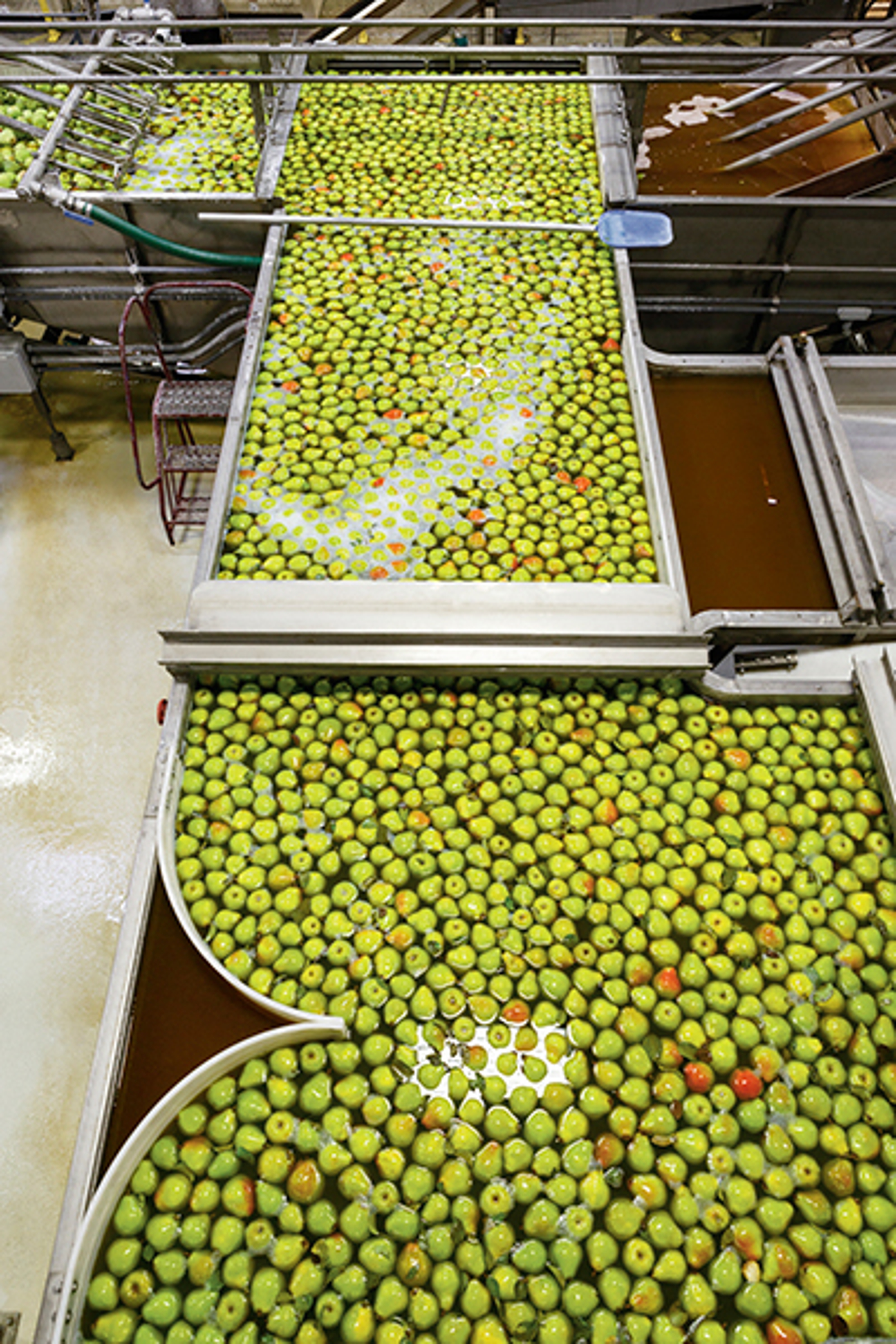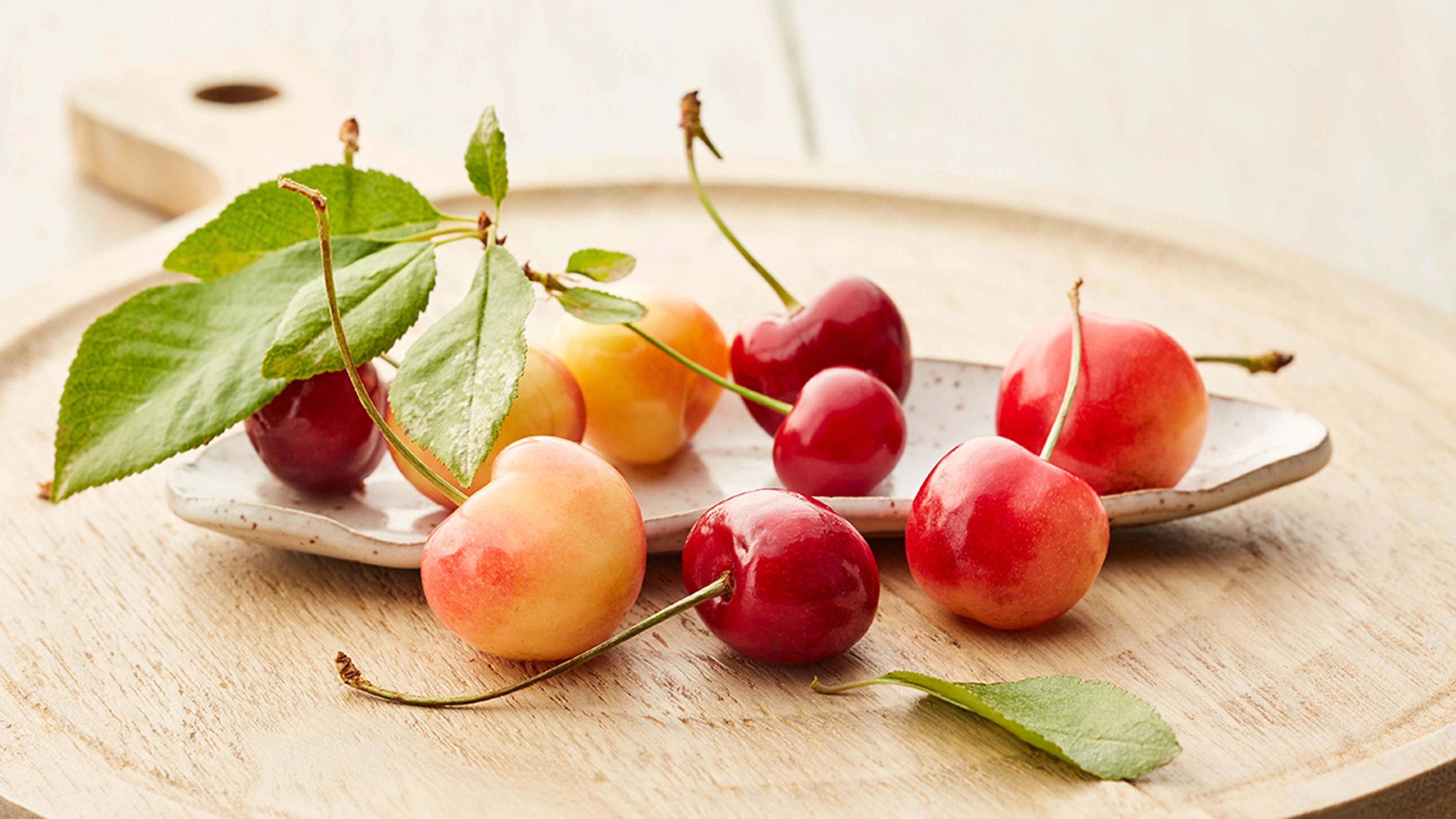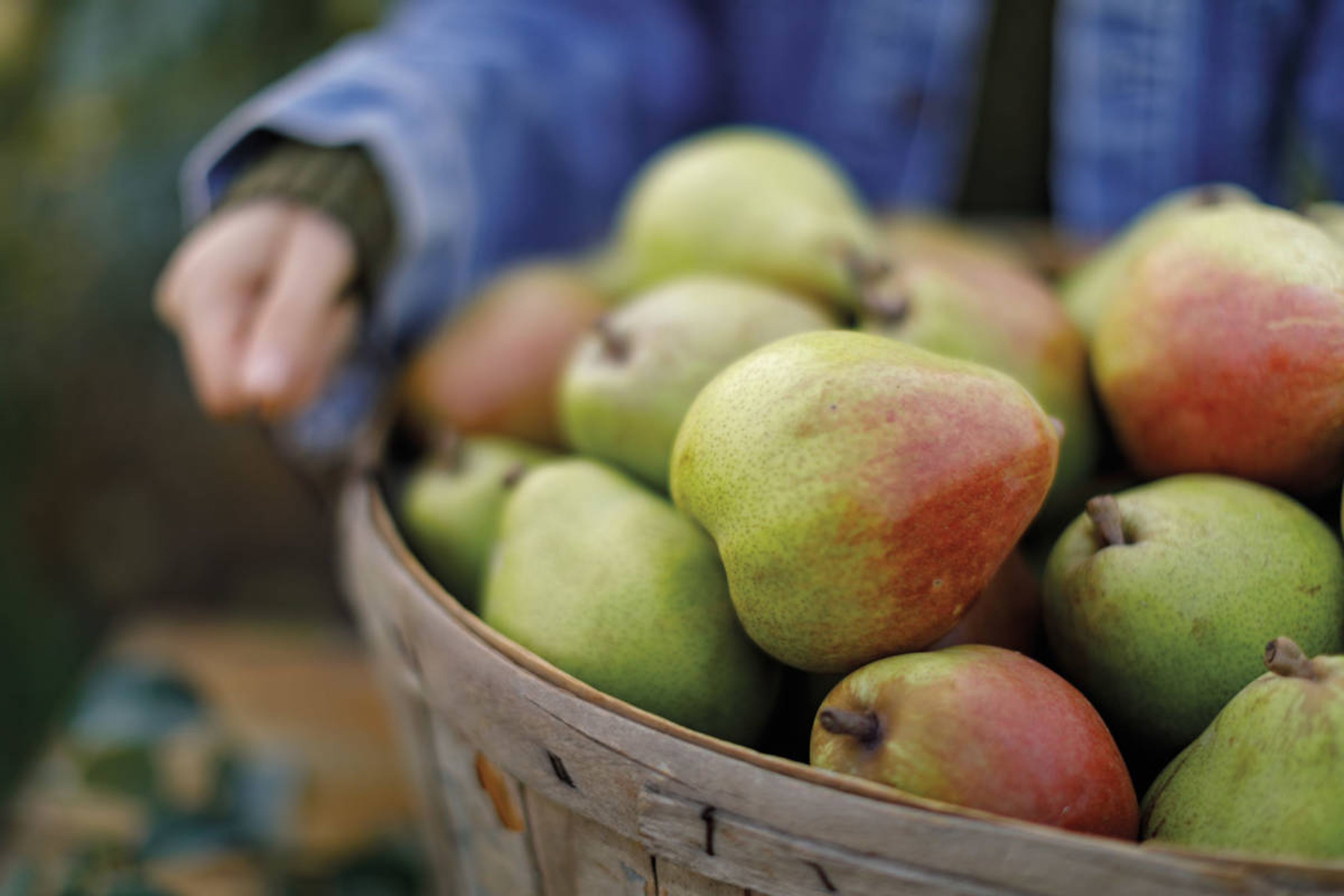9 of the Most Fruitful Facts About Pears
Did you know the pear represents life, health, and prosperity in certain Asian cultures?
Sep 30, 2021
1. "Un-pear-alleled variety
While you may be most familiar with Barletts and Boscs, there are more than 5,000 different varieties of pears grown across the globe, according to Kevin Moffitt, president and CEO of Pear Bureau Northwest.

“The U.S. grows about 12 main varieties of pears commercially," Moffitt says. “The top varieties, in order of production, are Bartlett, Anjou, Bosc, Red Anjou, Starkrimson, and Comice [the Harry & David Royal Riviera Pear is a special type of Comice]. Less familiar varieties include Forelle, Concorde, Red Bartlett, and Seckel."
2. The people's fruit
Like '90s grunge rock or the show Portlandia, pears are one of the Pacific Northwest's greatest exports. In fact, an estimated 84% of all the pears grown in the United States come from Oregon and Washington.
What does that many pears look like? According to Moffitt, that's enough fruit to lay across the planet (which has a diameter of 7,917.5 miles) nearly four and a half times!
3. Handle with care

Like many of the celebrities that come from the Pacific Northwest, pears are surprisingly delicate. In fact, because of their incredible sensitivity to bruising (the pears, not the celebrities), they are often considered one of the most fragile commercially grown fruits in the world.
As a result, pear farmers can't rely on high-tech agricultural devices or other automated procedures to harvest their fruit. Instead, says Moffitt, "all commercially grown fresh pears are picked and packed by hand and delicately handled all through the packing process to prevent bruising and scuffing."
Some companies even go so far as to use water-driven conveyor belts to transport their pears as they are being processed for consumers. They even religiously maintain their roads and transportation areas to keep their pears from being damaged by, say, an errant pothole.
The ripening process is just as complex.
4. The origin of the species
The Chinese are believed to have grown Asian pears dating as far back as 1134 B.C., whereas European pears didn't take off until the 17th and 18th centuries. That's when they became an obsession for the wealthy, who cherished their delicate flavor, buttery texture, and long storage life.
While pears thrive on the West Coast today, the first ones to reach North America were planted in the Massachusetts Bay colony by European settlers around 1620. These, however, proved exceptionally sensitive to blight. Luckily, pioneers following the Oregon Trail west in the 1800s brought pear trees with them, and the crops they planted when they reached their destination flourished.
5. A juicy muse

For centuries, pears served as a source of creativity for budding painters and artists. A renowned Renaissance work by 15th-century artist Giovanni Bellini known as “Madonna of the Pear" features a religious depiction of Madonna and child cradling a massive pear. Artist Giuseppe Arcimboldo famously painted portraits in the same era featuring faces composed entirely of fruit, with pears often representing a person's head or nose.
6. It's the wood that's so good
As special as pears are, the trees they come from are just as important. Pear trees can grow to between 30 and 40 feet tall and can live for up to 75 years. All that aged wood has a number of special uses:
- High-quality woodwind instruments, violins, and guitars
- Custom furniture
- Kitchen utensils, such as spoons, scoops, and stirrers (the wood has no flavor, so it doesn't contaminate food)
- Grilling and smoking meats. The smoke provides meat, pork, and chicken, in particular, with a sweet, fruity flavor.
7. Have pear, will smile
Pears have an ongoing connection to happiness and self-fulfillment. It was said that two different Greek goddesses — Hera and Aphrodite — considered the pear a sacred fruit. In ancient China, pears came to represent immortality and prosperity because the trees on which they grew lived so long. In Korea, the pear is thought to symbolize grace and nobility, and to serve as a symbol of comfort, bestowing wisdom and health on those lucky enough to eat it.
8. Buddha's delight
In Asia, those above ideals persist to this day. Many stores sell “Buddha"-shaped pears, which are thought to bring wellness and good luck. The pears, which are not only shaped like Buddha but even have unique facial details, are formed when farmers place a plastic mold around the growing fruit, forcing it to assume the Buddha shape as it grows and fills the mold.

9. The original peace pipe
The pear is also a symbol of affection and inner peace in many cultures. In fact, before the introduction of tobacco to Europe, many individuals smoked pear leaves. These people enjoyed the leaves not for just their mild, sweet taste but for all the supposed symbolic connections they brought as well.
.svg?q=70&width=384&auto=webp)







